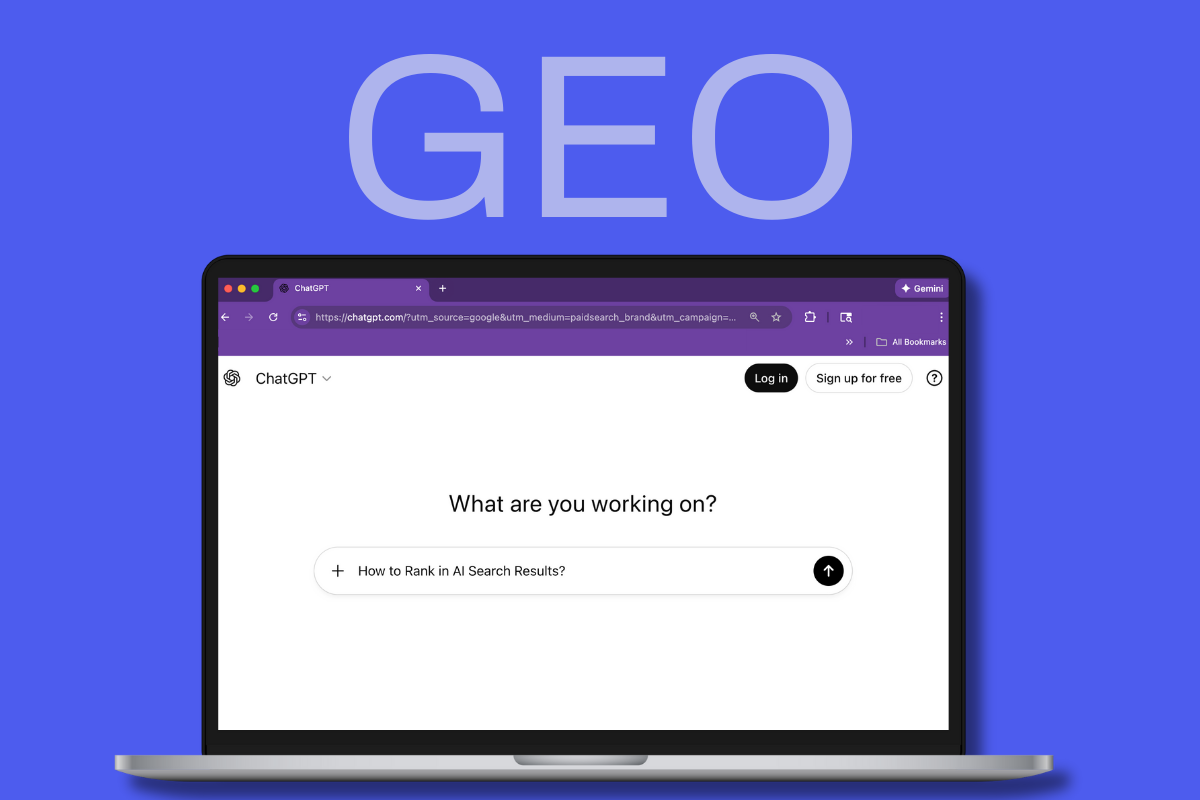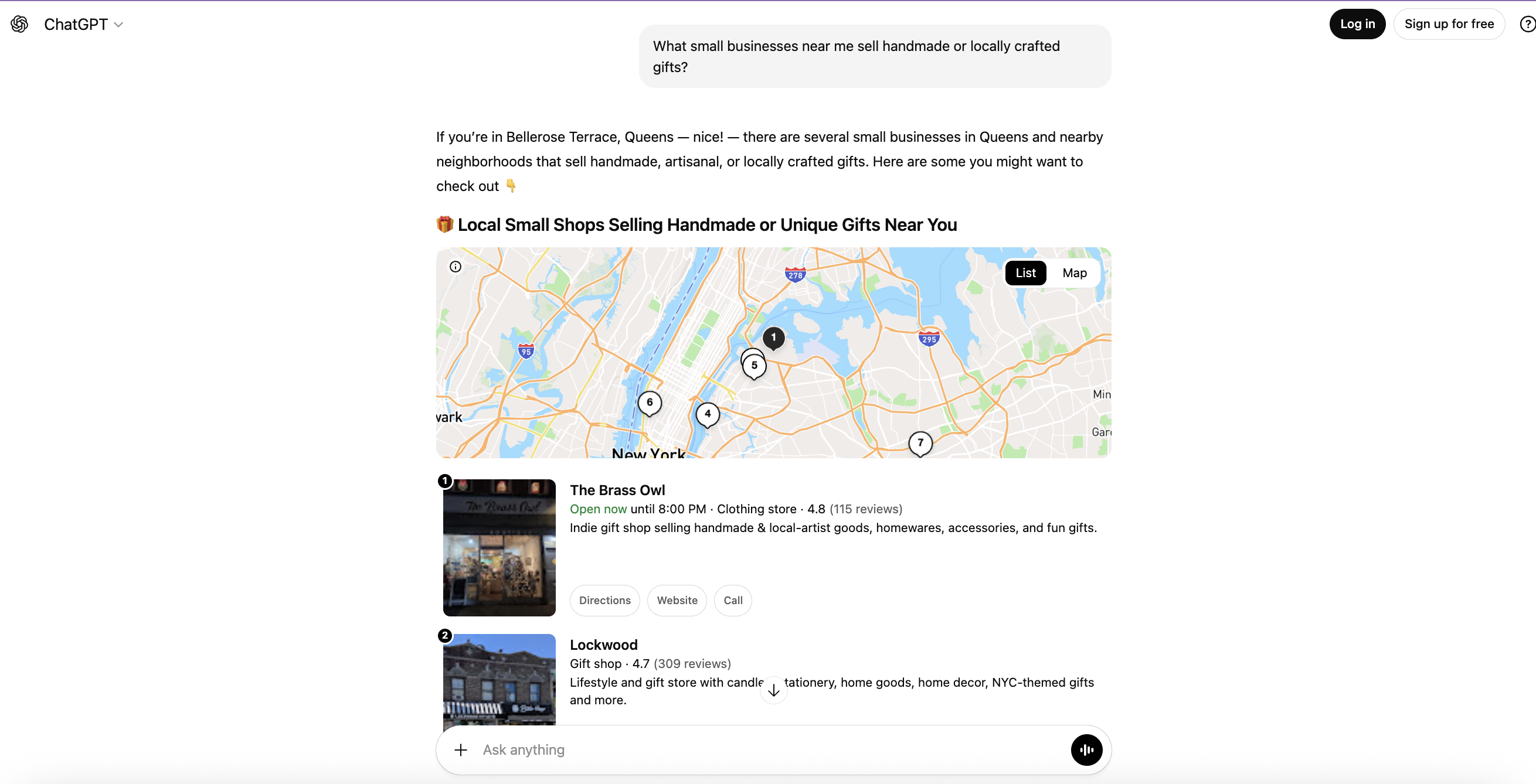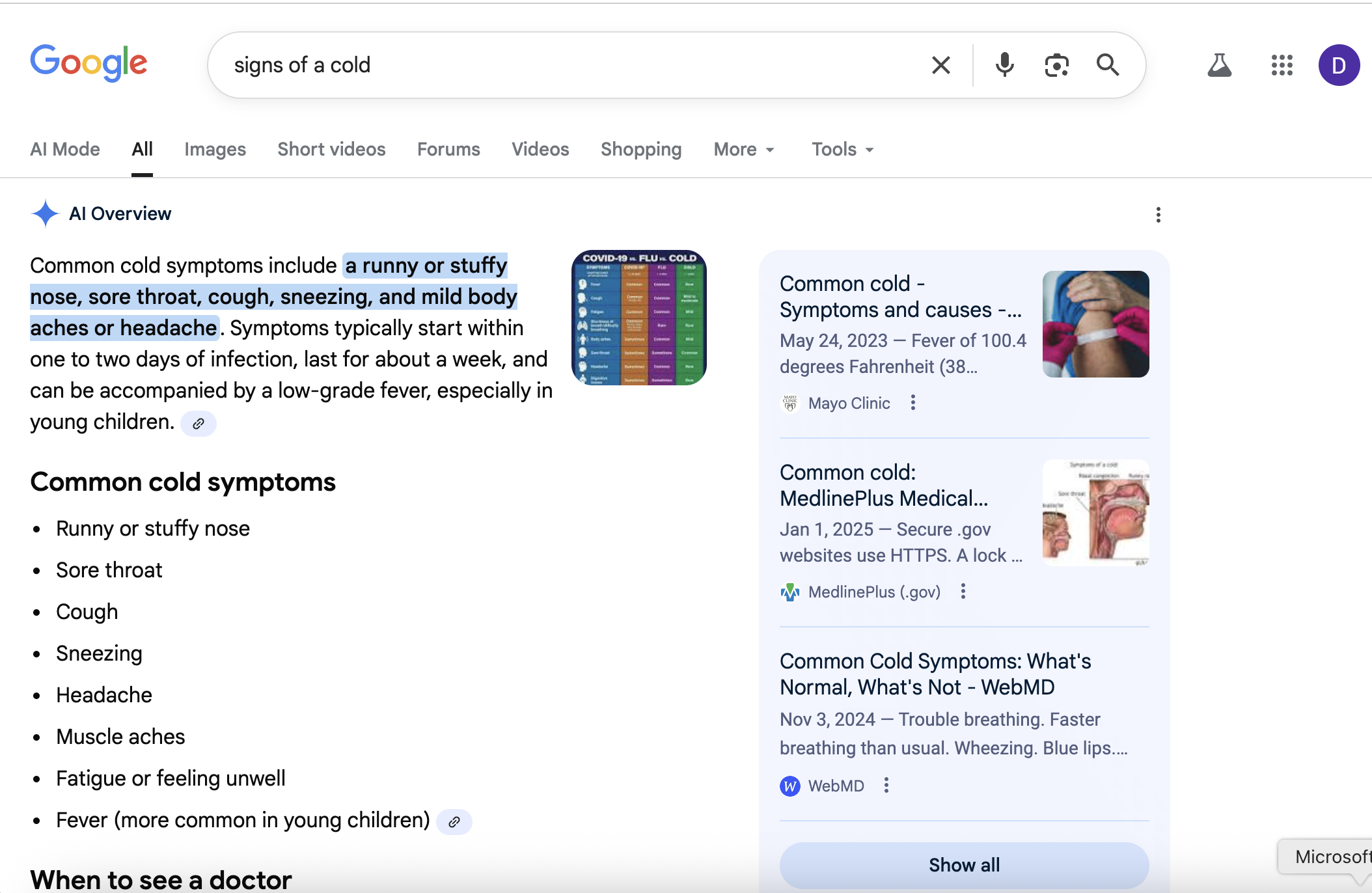November 26, 2025

AI-powered tools like ChatGPT, Gemini, and Google AI Overview are changing how people search. Businesses must optimize for how AI reads and cites content.

Written by
Domenica Martello
Digital Marketing Specialist
AI-powered tools are rewriting the rules of how we find information online.
These platforms summarize content from multiple sources to deliver answers quickly, without the need to scroll or click.

But they don’t source their information from just anywhere. They prioritize website content that’s trustworthy, clearly written, and easy to cite.
So how do you make sure your content is the one that comes up in AI search results? Generative Engine Optimization, more commonly known as GEO.
In this blog, we’re breaking down what GEO means, how it’s different from traditional search engine optimization, and how to make sure your website is AI-ready.
Key Takeaways:
What is GEO?GEO (Generative Engine Optimization) is the process of optimizing your website and its content for AI-powered search engines and tools.
You probably know or have used tools like:
Instead of just crawling your site like a traditional search engine, AI tools try to understand your content, break it down, and use it in human-like conversations and summaries.
GEO helps your website become the source these tools quote, recommend, or build their answers around.
The Key Performance Indicators for GEO include:
SEO and GEO have similar focuses of producing good content and EEAT (Experience, Expertise, Authoritativeness, and Trustworthiness). However, it’s important to note the different things to consider especially with AI bots.
SEO (Search Engine Optimization) focuses on earning your spot at the top of search results. You target the right keywords, build backlinks, and optimize pages to climb the ranks and increase visibility on Google. The goal is to win the click.
GEO (Generative Engine Optimization) focuses on becoming the answer. In an AI-powered search experience, users aren’t clicking and perusing through multiple websites to find what they’re looking for. They're getting instant, summarized responses. That means visibility comes from being the source the AI chooses to reference or build its answer from.
While SEO focuses on pleasing algorithms to boost rankings, GEO focuses on making your content clear, factual, and structured so AI models can understand and cite it directly.
By now, we can see that AI is not going anywhere. Businesses can use GEO to propel their brand visibility.
If you’re not convinced, explore these facts:

For even more facts and numbers about AI Search, read SEMRush’s article: https://www.semrush.com/blog/ai-seo-statistics/
We’ve discussed the benefits and importance of GEO, so now let’s explore how to put it into practice.
GEO has the same fundamental focus of good content like SEO, so some of these points may sound familiar:
AI favors content that is easy to understand and answers a question immediately.
One of the biggest mistakes businesses make is using vague marketing language and forgetting to clearly state what they do.
Start with a short, straightforward answer. Then expand with the “why” or supporting details.
For example, imagine a Mexican restaurant describing their business like this:
“We offer exceptional cuisine inspired by bold Mexican flavors, crafted to deliver an elevated dining experience for all who visit.”
This sounds nice, but it doesn’t actually say anything. AI models (and even humans) can’t confidently infer what food you serve, whether you offer takeout, where you’re located, or what makes you unique.
An introduction that’s more direct is:
“We’re a family-owned Mexican restaurant in Chicago serving authentic street-style tacos, burrito bowls, and traditional dishes made from scratch. Our goal is to give our community a place to enjoy fresh, comforting food that feels like home”
The second version:
This is the type of clarity AI models look for when deciding what information to include in an answer. Plus, this is the kind of clarity us humans prefer.
AI models crawl and interpret pages that are digestible and easy to pull from.
Rather than writing multiple long paragraphs, break up your content with the use of:
This makes it easier for AI to pull and organize your information into summaries.
Like traditional search engines, Schema Markups helps AI understand the purpose of your content.
Different pages you can generate schema markups for include:
The more factual, specific, and verifiable your content is, the more likely AI will cite it.
Include
Whenever you’re including information from another website, it’s always important you provide a citation.
For example, when using a stat from SEMRush, I provided a hyperlink to the page I got the information from:
Research from Semrush shows that traffic from large language model (LLM) powered search projects to surpass traditional Google organic search by early 2028.
In traditional SEO, the emphasis was on incorporating a target keyword throughout your content. While keywords still matter, GEO shifts the priority toward natural, conversational language that mirrors how people actually ask questions.
Instead of obsessing over keyword placement, focus on writing in clear, everyday speech. Focus more on long-tail phrases and real questions your audience would type or say out loud. These are the queries AI tools are built to understand.
AI responds best to content that feels human, approachable, and easy to interpret.
AI models (and Google’s AI Overview) favor timely content. Updating your core content signals that your site is active and has the most up-to-date information.
Take the time to scan over your core webpages and blog content and update where needed.
Boost trust and credibility with EEAT (Experience, Expertise, Authoritativeness, Trustworthiness). Acting as an expert without any proof doesn’t work anymore.
Here’s some ways you can emphasize EEAT on your website:
These help AI decide that your business is authoritative and safe to cite.
Like SEO, GEO doesn’t just rely on the content found on your website. AI tools look for brand recognition across the entire web to verify who you are and what you do.
The more your business appears consistently across trusted platforms, the more confidently AI can reference you.
Strengthen off-site signals through:
Beyond simply existing on these platforms, consistency is key. Your brand messaging, value propositions, services, and contact information should match across every touchpoint.
Just like sitemaps.xml and robots.txt communicates with search engines, llms.txt communicates with AI crawlers.
This file allows you to tell AI which pages to prioritize, point AI to your preferred canonical URLs, and improve the accuracy of how your business is represented.
Currently website builders like Webflow and WordPress Plugins have an llms.txt file upload feature that’s available, with Wix’s still in beta.
GEO is still an emerging strategy and we’re continuing to learn more about how AI-powered search works everyday. We don’t have a single perfect playbook yet. But the businesses that start laying the groundwork now will be miles ahead as AI systems continue to evolve.
By focusing on good content, strong technical foundations, and consistent off-site marketing, you’re building a solid base that helps your brand get recognized and trusted by AI tools.
If you start early and stay consistent, you'll already be ahead of the vast majority of businesses who are still relying solely on traditional SEO.
Don’t know where to start?
WD Strategies is a full-service digital agency that helps businesses improve and monitor their AI search visibility through SEO & GEO audits, strategic content development, technical optimization, and ongoing performance tracking.
Whether you need help building a foundation or want support staying ahead of the constant changes in AI search, our team can guide you every step of the way.